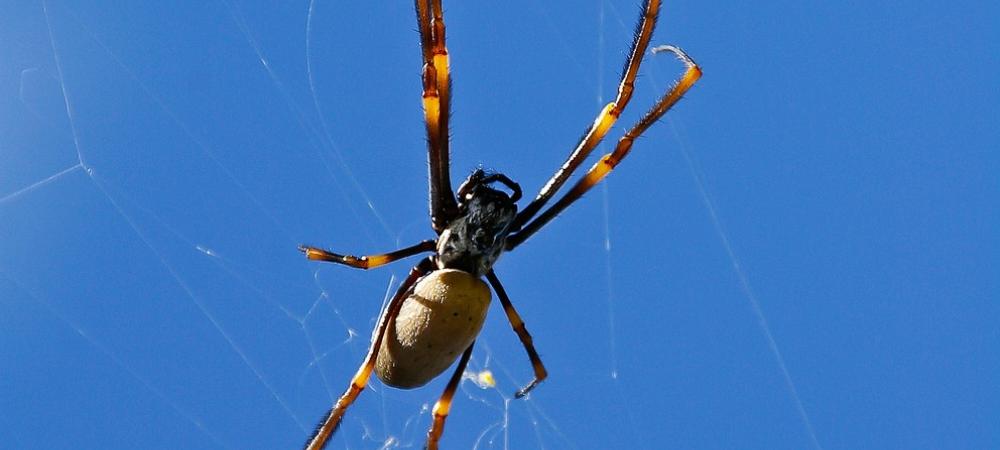Orb Weaver Spiders in West Virginia: Nature’s Master Architects

Orb weaver spiders are some of the most fascinating creatures you can encounter in West Virginia’s landscapes. Known for their extraordinary web-building skills and striking appearances, these spiders are essential to the region’s ecosystems. Whether you’ve spotted a marbled orb weaver in a forest clearing or a cross orb weaver in your garden, there’s much to learn about these arachnids. This blog explores the types of orb weaver spiders in West Virginia, their behaviors, and common questions about their interactions with humans.
What Are Orb Weaver Spiders?
Orb weaver spiders belong to the family Araneidae, one of the largest spider families in the world, with thousands of species. They derive their name from the circular, orb-shaped webs they construct to catch their prey. These spiders can be found in various habitats, including woodlands, fields, gardens, and even near buildings. In West Virginia, their prevalence increases in late summer and fall when adult spiders are actively spinning their intricate webs.
Their webs serve as both hunting tools and homes. Made of silk that is stronger than steel of the same diameter, these webs are engineering marvels, reflecting the spider’s skill and precision.
How to Identify Orb Weaver Spiders
Identifying orb weaver spiders can be a rewarding experience, as their diverse appearances and behaviors make them fascinating subjects. The most distinctive feature of an orb weaver is its web—a large, symmetrical structure with concentric circles radiating from a central hub. These webs are often found stretched between plants, trees, or man-made structures.
In terms of physical appearance, orb weavers generally have rounded abdomens, long legs, and a wide range of colors and patterns. Species like the marbled orb weaver boast bright, intricate designs, while others, like the brown orb weaver, blend seamlessly into their surroundings with muted tones.
Common Orb Weaver Spiders in West Virginia
West Virginia’s diverse environment supports several orb weaver species, each with unique characteristics. Among the most notable are the cross orb weaver, marbled orb weaver, spotted orb weaver, and the brown orb weaver.
Cross Orb Weaver Spider
The cross orb weaver, also known as the garden spider, is easily recognized by the white cross-shaped markings on its abdomen. Its web is typically constructed in gardens or wooded areas and is one of the largest and most symmetrical among orb weavers. This spider is particularly active in the evening, repairing or constructing its web to prepare for nighttime hunting.
Marbled Orb Weaver Spider
With its vibrant, marbled patterns, the marbled orb weaver is one of the most visually striking spiders in West Virginia. Its abdomen displays intricate patterns in shades of orange, yellow, and black, making it a favorite subject for nature photographers. These spiders are often found near water sources, such as streams or ponds, where they weave their webs between plants or branches.
Spotted Orb Weaver Spider
The spotted orb weaver has a reddish-brown body adorned with white or yellowish spots. This species is often seen in suburban settings, spinning its webs in sheltered locations like porch railings or window frames. Unlike some orb weavers, the spotted orb weaver’s web is not always as perfectly circular but is just as effective for trapping prey.
Brown Orb Weaver Spider
Brown orb weavers encompass several species with muted, earthy tones. These spiders are usually found in shaded areas such as under decks or within dense vegetation. Their coloration provides excellent camouflage, making them harder to spot unless you see their webs glistening in the light.
Are Orb Weaver Spiders Poisonous or Dangerous?
A common question about orb weaver spiders is whether they pose a threat to humans. While the thought of spiders often triggers concern, orb weavers are entirely harmless.
Orb weavers do produce venom, as it is essential for subduing their insect prey. However, their venom is not harmful to humans. If an orb weaver feels threatened, it may bite, but such incidents are extremely rare. Even if bitten, the effects are mild and comparable to a mosquito bite, causing slight irritation or redness at most.
These spiders are non-aggressive and prefer to retreat rather than confront humans. Their webs, though occasionally inconvenient when stretched across pathways, are harmless and play a vital role in catching insects like flies and mosquitoes.
The Lifecycle of Orb Weaver Spiders
The lifecycle of an orb weaver spider is relatively short, usually lasting about a year. In the spring, eggs laid in silk sacs hatch into spiderlings. These tiny spiders disperse quickly, spinning small, rudimentary webs as they grow. By summer, they are juveniles, and their web-building skills improve dramatically.
By fall, orb weavers reach adulthood and become more visible as their webs grow larger and more elaborate. This is the time when most people notice them, particularly in gardens or wooded areas. After mating, adult orb weavers typically die as winter approaches, leaving behind egg sacs to overwinter and continue the cycle.
Orb Weaver Spiders and Their Role in West Virginia
Orb weaver spiders are not just masterful architects; they are also crucial components of West Virginia’s ecosystems. By capturing and consuming large numbers of insects, including pests like flies and mosquitoes, they help maintain a natural balance. Their presence in gardens and forests indicates a healthy environment, as they rely on abundant insect populations to survive.
Despite their intimidating webs and appearances, orb weavers are allies in pest control. Encouraging their presence can reduce the need for chemical pesticides, benefiting both the environment and human health.
Next time you see an orb weaver spider in West Virginia, take a moment to admire its artistry and contribution to the ecosystem. And if their webs happen to cross your path, remember—they’re working hard to keep your surroundings free of pesky insects.
